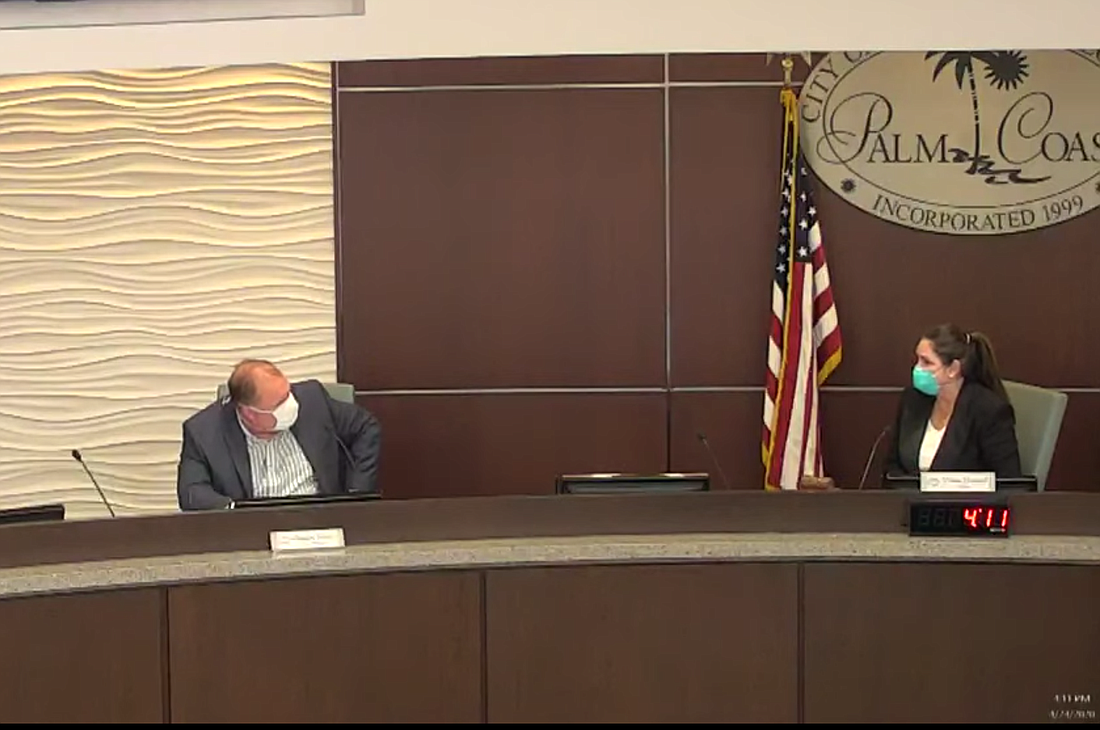- April 5, 2025
Your free article limit has been reached this month.
Subscribe now for unlimited digital access to our award-winning local news.

The city of Palm Coast has released a “Recovery Planning Chart” to show residents how the city will reopen as certain “gates,” or landmarks, are reached. Although an announcement from the state is expected by May 1, the city’s chart contains no dates, and that is on purpose: The timing of recovery is uncertain.
“We know what our destination is, and that is all of us in American want to see our country reopen.”
MATT MORTON, city manager
“This map, this approach … has been based on a tremendous amount of assumptions,” Mayor Milissa Holland said in a YouTube video April 24, along side City Manager Matt Morton and Palm Coast Fire Chief Jerry Forte.
Morton said the chart would enable the city to go forward “not with fear but with courage.”
After the containment period, which is designed to stop the spread of COVID-19, there are three phases to the recovery plan:
See the city's full plan here.
The city is currently in Containment, which is characterized by social distancing and the closing of nonessential businesses, among the other restrictions we are living with.
As it appears that the spread of the virus is being controlled, the city will move into Phase I of recovery, following the lead of Gov. Ron DeSantis, who is the one who would have to lift the stay-at-home order for nonvulnerable populations. The chart suggests that spread will be deemed under control once the Department of Health reports a 14-day downward trajectory of documented cases of COVID-19, or a 14-day downward trajectory of positive tests as a percentage of total tests.
In Phase I, restrictions will be eased on public activity, and businesses may reopen, with restrictions. For example, a restaurant might need to limit the number of customers in the dining area. Socializing in groups greater than 10 should still be avoided.
If the 14-day downward trajectories continue, and if the CDC reports that the virus spread is under control, Phase II can begin. That means govern facilities can reopen, with proper distancing practices. Nonessential travel would resume, and socializing in groups greater than 50 should be avoided. Face masks, frequent hand washing and social distancing are all still the norm.
If there is no rebound of the virus, and if antibody testing is “robust,” Phase III can begin, meaning there are no restrictions on the sizes of social gatherings. Schools would be reopened, and social distancing would no longer be required. Face masks and hand washing would still be encouraged. Vulnerable populations could resume public activities.
Morton, Holland and Forte said the chart could be used by city directors to guide decisions about how to lead employees during the recovery.
Forte noted that he was going to be monitoring his firefighters so that they are read to respond not only to COVID-19 challenges, but also to the upcoming hurricane season.
Morton said that some practices learned during the pandemic could continue among city staff, such as using Zoom to help city staff members save time on travel to attend certain meetings.
Holland encouraged residents to “stay diligent with social distancing, wearing the masks wherever you go.”
Your free article limit has been reached this month.
Subscribe now for unlimited digital access to our award-winning local news.